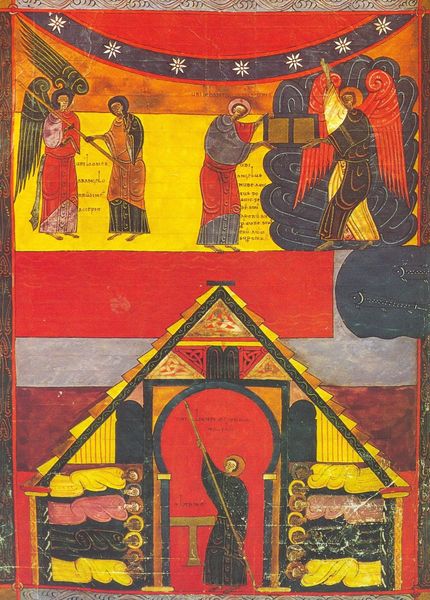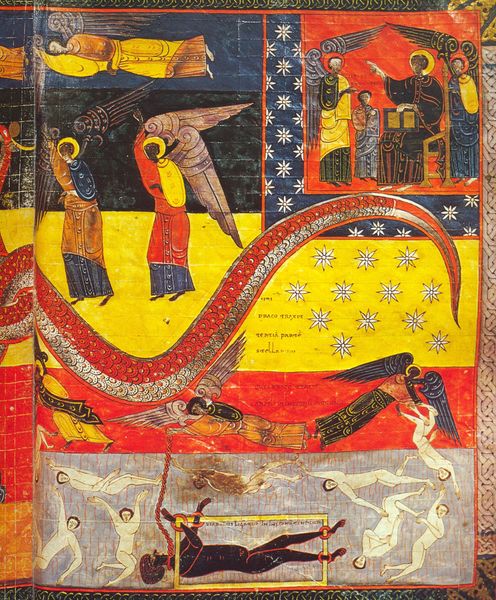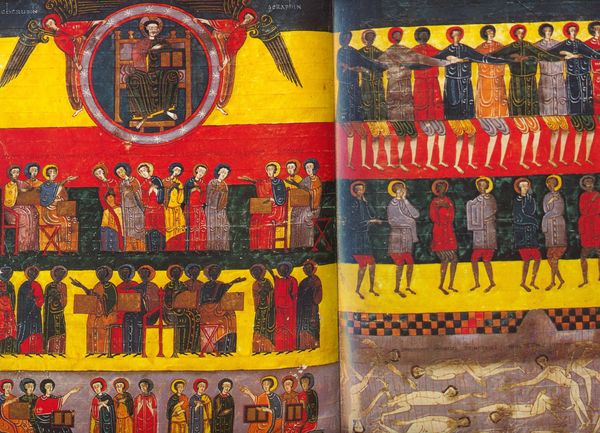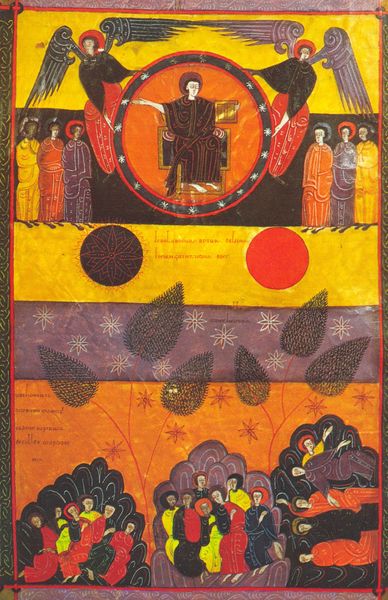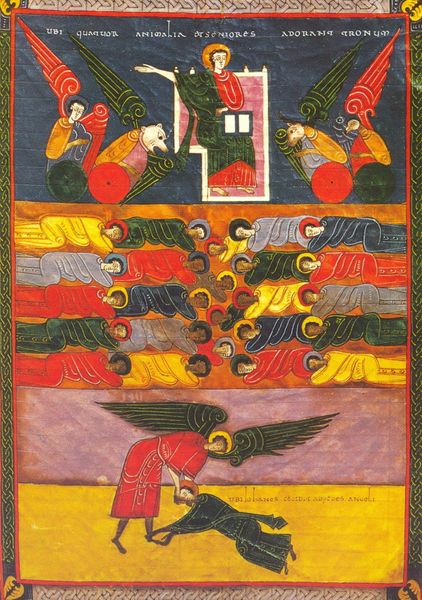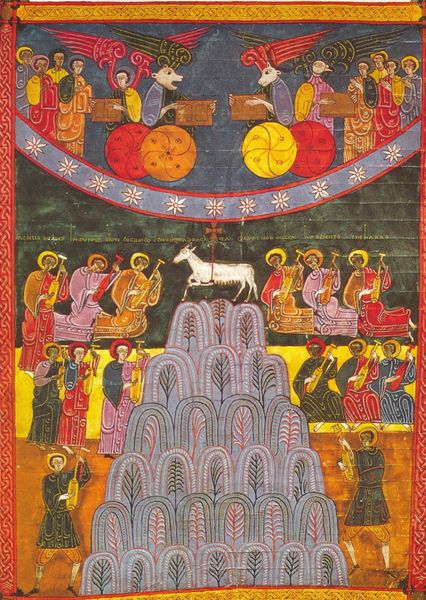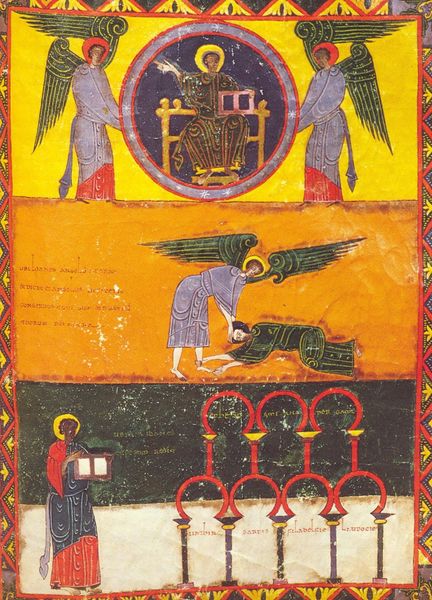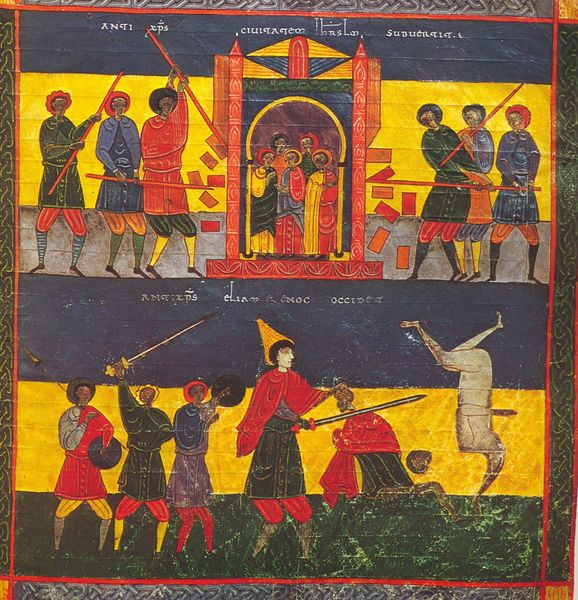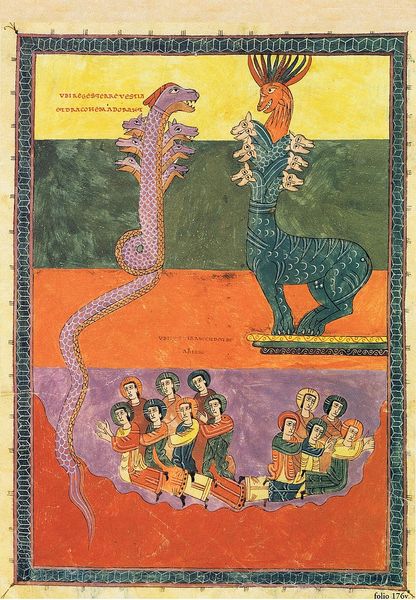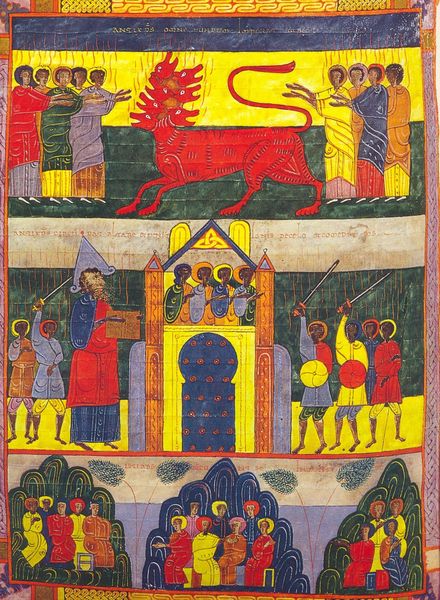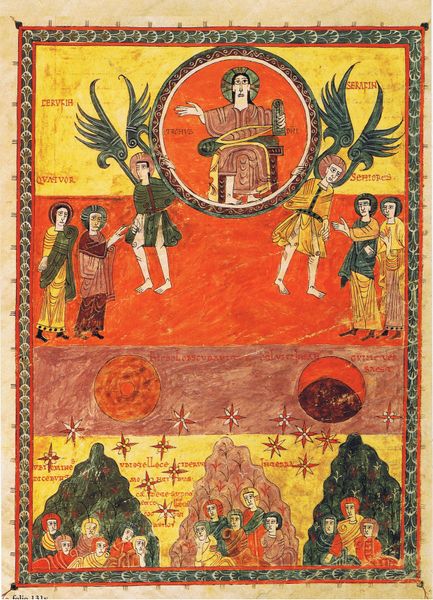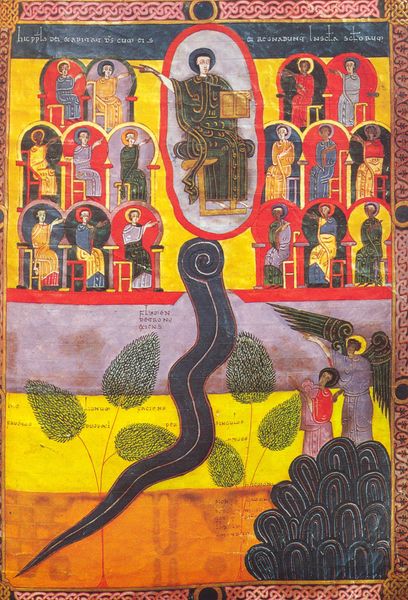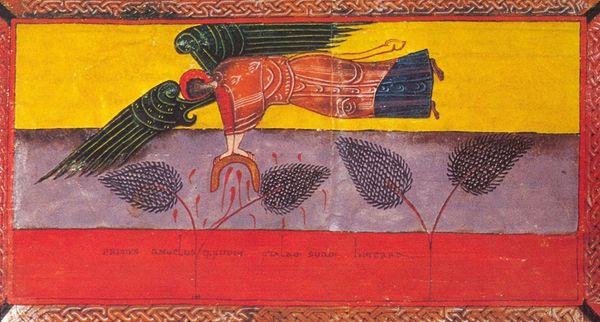
tempera
#
byzantine-art
#
medieval
#
tempera
#
figuration
#
text
#
history-painting
Copyright: Public domain
Curator: This tempera panel, likely originating in medieval times, is titled "L'Ange montre le Trône de Dieu. Les deux Témoins. Apoc. XI." Editor: It's so visually intense, a kaleidoscope of stylized figures and segmented spaces. It makes me think about the arduous process involved in layering all those colors so painstakingly, the human labor embedded in each stroke. Curator: Absolutely. It’s rife with Byzantine symbolic visual language. Take, for instance, the enthroned figure within the mandorla at the top—that’s undoubtedly a representation of the divine, ringed with starry emblems of holiness. Editor: Right, and what about the medium? Tempera binds the pigment directly to the board. Considering the cost of pigments at that time, such decisions underscore the relationship between value, production and reverence inherent in Byzantine art. Curator: Exactly! The angel, for example, points emphatically toward the throne, directing our attention to a cosmic hierarchy, while also interceding between that divine realm and the mortals beneath, each rendered with formulaic yet expressive gestures. The fall from grace. Editor: Yes, and those stylized prostrations – or the people tumbling, they almost look like puppets controlled by forces unseen, an impression intensified by the clear boundaries marking each strata of experience. It evokes questions of control and agency within this depiction of judgement. Curator: That's a fascinating connection. Think about the power invested in images and symbols during the medieval period—their capacity to evoke emotions of awe, fear, hope—as visual cues to spiritual and earthly authority. Editor: Which leads me back to the craftsmanship; the quality and time speaks to the importance of craft. It reveals both the artist's individual skill and place in a broader socioeconomic hierarchy. Curator: It certainly bridges craft and spirituality. Studying Facundus and Byzantine art is indeed a window to examine the deep and lasting interplay of culture, material practice, and symbolic power. Editor: Agreed. A truly illuminating piece for understanding labor, materiality, and how this affects the impact an image may leave.
Comments
No comments
Be the first to comment and join the conversation on the ultimate creative platform.
